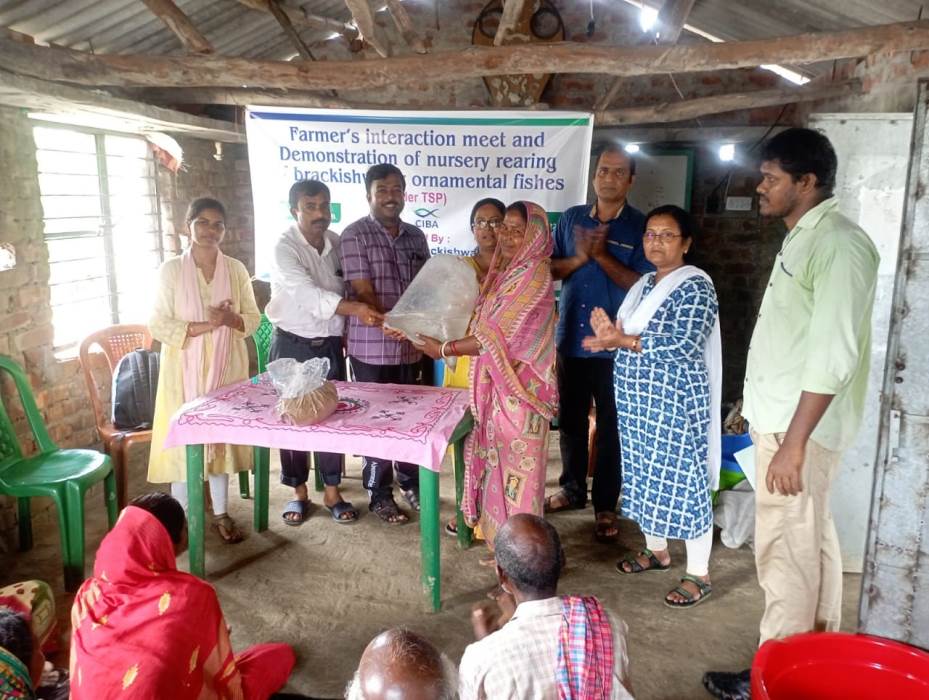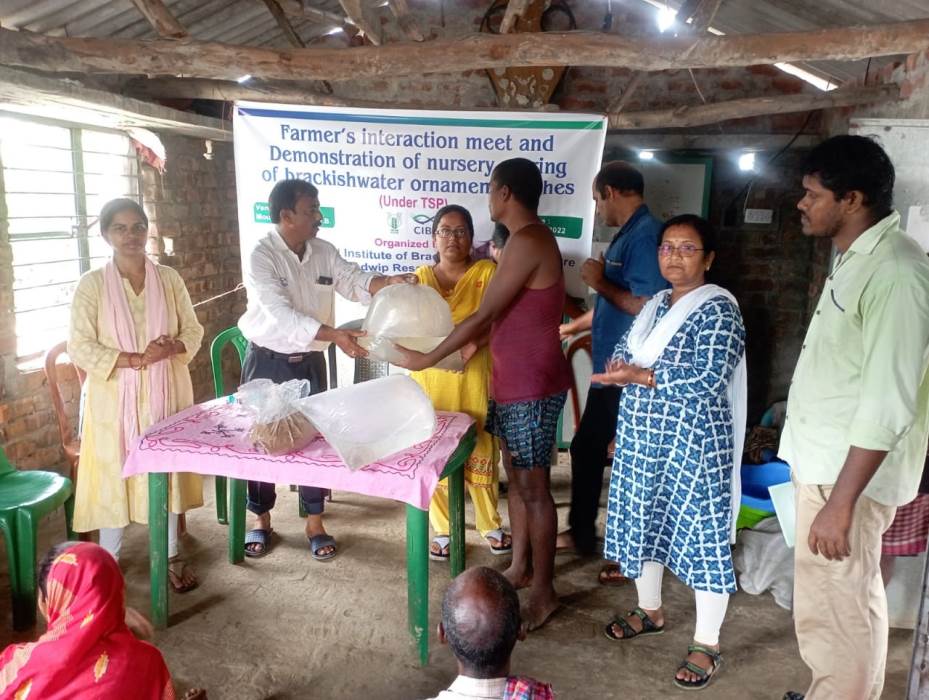In the Sundarban region of West Bengal mangroves serve as breeding and nursery zones for many brackishwater and marine fish. Wild fish seed collection is a traditional occupation of the tribal. Stocking of wild fish seeds into poorly managed homestead ponds provided them with a meagre income. Therefore, extending a fisheries based alternative livelihood opportunity might provide them additional employment and income. In this context, the Kakdwip Research Centre (KRC) of ICAR-Central Institute of Brackishwater Aquaculture (CIBA) organized a tribal farmers interaction meet with researchers and demonstration of nursery rearing of brackishwater ornamental fishes as an alternative livelihood option at Baliyara, Mousuni Islands, West Bengal on 21st July 2022. Forty tribal farmers participated in the program. Mrs. Babita Mandal, Scientist, FCD, highlighted the income generation through the adoption of brackishwater ornamental fish rearing in homestead ponds scientifically. Dr. T.K. Ghoshal, Principal Scientist, interacted with them and explained about scaling up of the technology and feed management. Mr. Satyajit Ghosh, Fishery Extension Officer (FEO), Namkhana block joined the program and briefed the tribal farmers about the ongoing financial and technical assistance plans from various government agencies. Dr. Prem Kumar, Senior Scientist, FCD, interacted with the farmers and narrated the package of practices of hapa-based nursery rearing. Dr. Leesa Priyadarshani, Scientist, AAHED, discussed about potential diseases and their management in nursery rearing. Mrs. Chanda Mazumder, Senior Technical Officer, KRC, apprised the farmers about various technology models demonstrated by KRC-CIBA in different locations. Hatchery-produced month-old pearl spot fry were handed over to tribal farmers along with hapa, farm implements, and fish feed. Demonstration of hapa fixing, fish seed acclimatization, stocking, and feeding were also done at the site. The program was coordinated by Mrs. Babita Mandal, Scientist along with the scientific team at KRC.
Night mode



